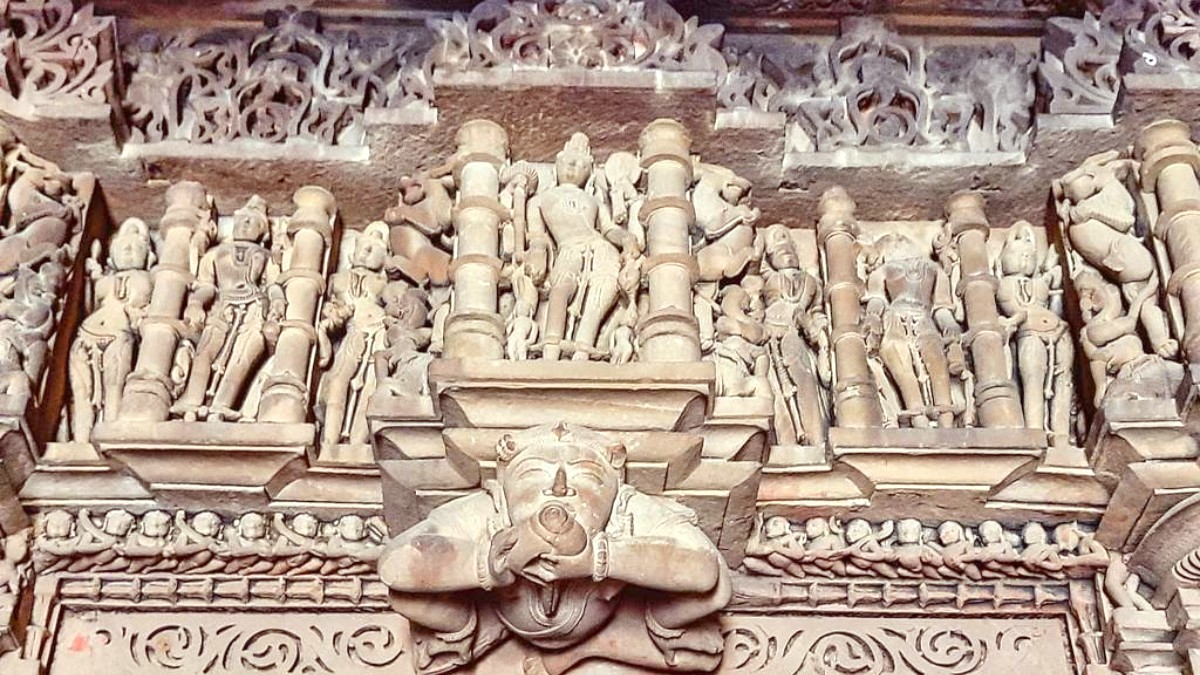
Madhya Pradesh And Chhattisgarh, India
Khajuraho's culinary traditions are rooted in India's agricultural heritage. Wheat is a staple, forming the base for various breads.
Dairy products, notably ghee, paneer, and curd, are widely used, adding richness to many dishes.
Food is traditionally eaten with the right hand. Wash thoroughly. Avoid the left hand for eating or passing food.
Sharing dishes is common among family or friends. This enables tasting a variety of menu items.
Try to finish food on your plate. Avoid leaving excessive amounts; it appears wasteful.
Baked wheat balls served with rich lentil curry, generous ghee, and often a spicy chutney.
Seek this at local eateries or dhabas for an authentic experience.
Flattened rice, seasoned with mustard seeds, turmeric, onions, and green chilies. Topped with sev and fresh coriander.
Widely available at breakfast spots and street food stalls.
A platter with small portions of various dishes: dal, sabzi, rice, roti or puri, curd, pickle, and a small dessert.
An excellent way to sample multiple items and get a balanced meal.
Spiced Indian tea with milk and sugar. You will find it everywhere, from roadside stalls to hotels.
A popular yogurt-based drink, sweet or salted. Mango lassi is common. Seasonal fresh fruit juices are also widely available.
Luxury hotels like Radisson and Ramada feature fine dining. They offer a mix of Indian and international cuisine in refined settings.
Several mid-range restaurants cater to tourists, especially around the Western Group of Temples.
Numerous small dhabas and street food stalls offer authentic and affordable local cuisine.
India is incredibly vegetarian-friendly. Most restaurants offer extensive meat-free menus.
Many dishes are naturally meat-free due to cultural practices.
Vegan can be more challenging. Ensure no dairy products (ghee, paneer, curd, milk, cream) are used.
Clearly communicate "no milk, no butter, no ghee, no paneer" when ordering.
Confirm directly with restaurants if halal meat is a strict requirement for you.
Kosher food is extremely limited or non-existent. Travelers require planning to bring their own.
Many rice-based or lentil-based dishes are naturally gluten-free. Wheat is prevalent in breads.
Nuts (cashews, almonds) and dairy are common ingredients. Communicate severe allergies clearly.
Formal tours to farms are limited in the region.
Interactions with local farmers might occur informally through guesthouses.
These interactions offer insight into local farming practices and produce.
A way to understand the agricultural base of local cuisine.
Dining at restaurants with a view of the illuminated temples, like Raja Cafe, a memorable experience.
As an inland destination, seafood is not a traditional part of Khajuraho's local cuisine.
Alcohol is available at many mid-range and luxury hotels and some tourist-oriented restaurants.
In winter, Gajar Ka Halwa (a warm carrot pudding) is a popular seasonal dessert.
Dining at restaurants with a view of the illuminated temples, like Raja Cafe, a memorable experience.
Combines good food with a stunning historical backdrop.
An excellent way to sample multiple dishes and get a balanced meal.
Try a fresh mango lassi, especially during mango season (late spring to early summer). A refreshing and delicious treat.
Learning basic Hindi phrases for dietary restrictions (e.g., "Main shakahari hoon" - I am vegetarian) is appreciated.
Use translation apps like Google Translate (with offline Hindi downloaded) to communicate with restaurant staff.
Always reconfirm your dietary requests in smaller, local eateries for clarity.